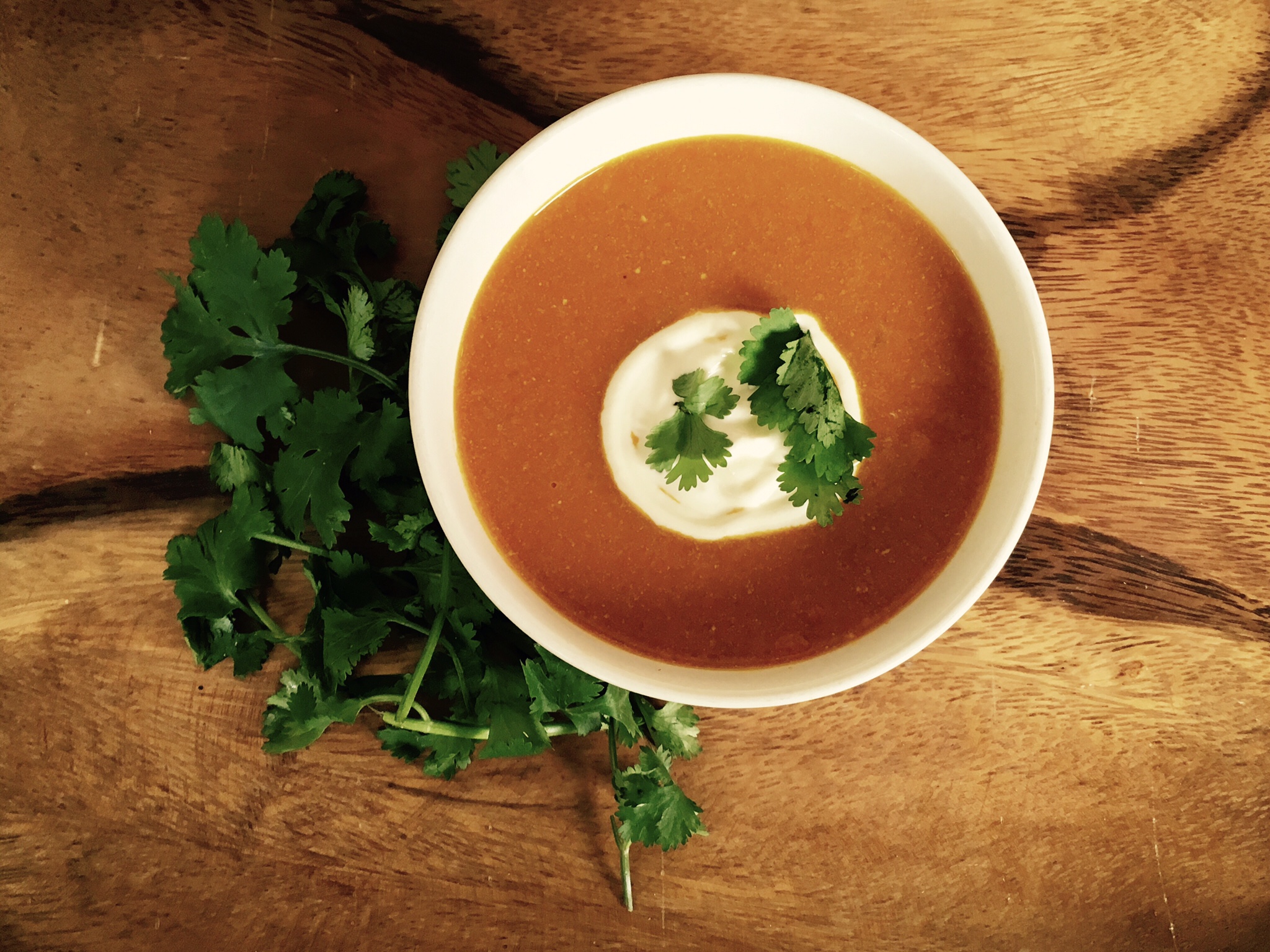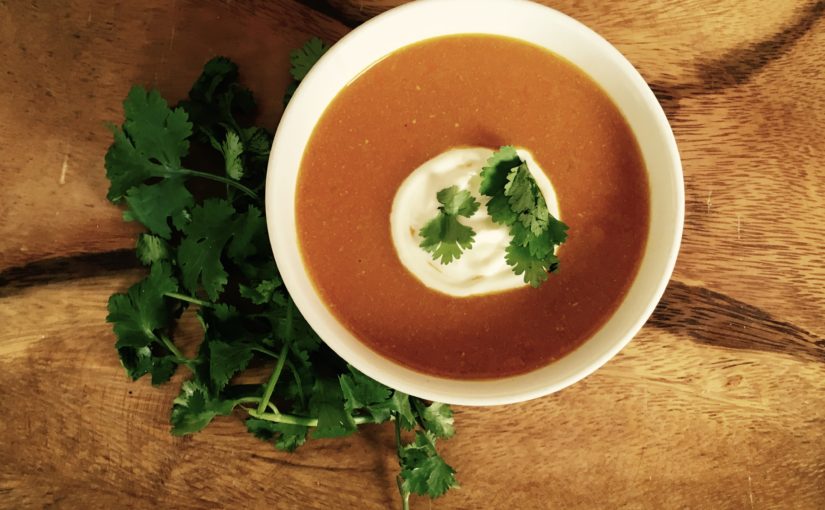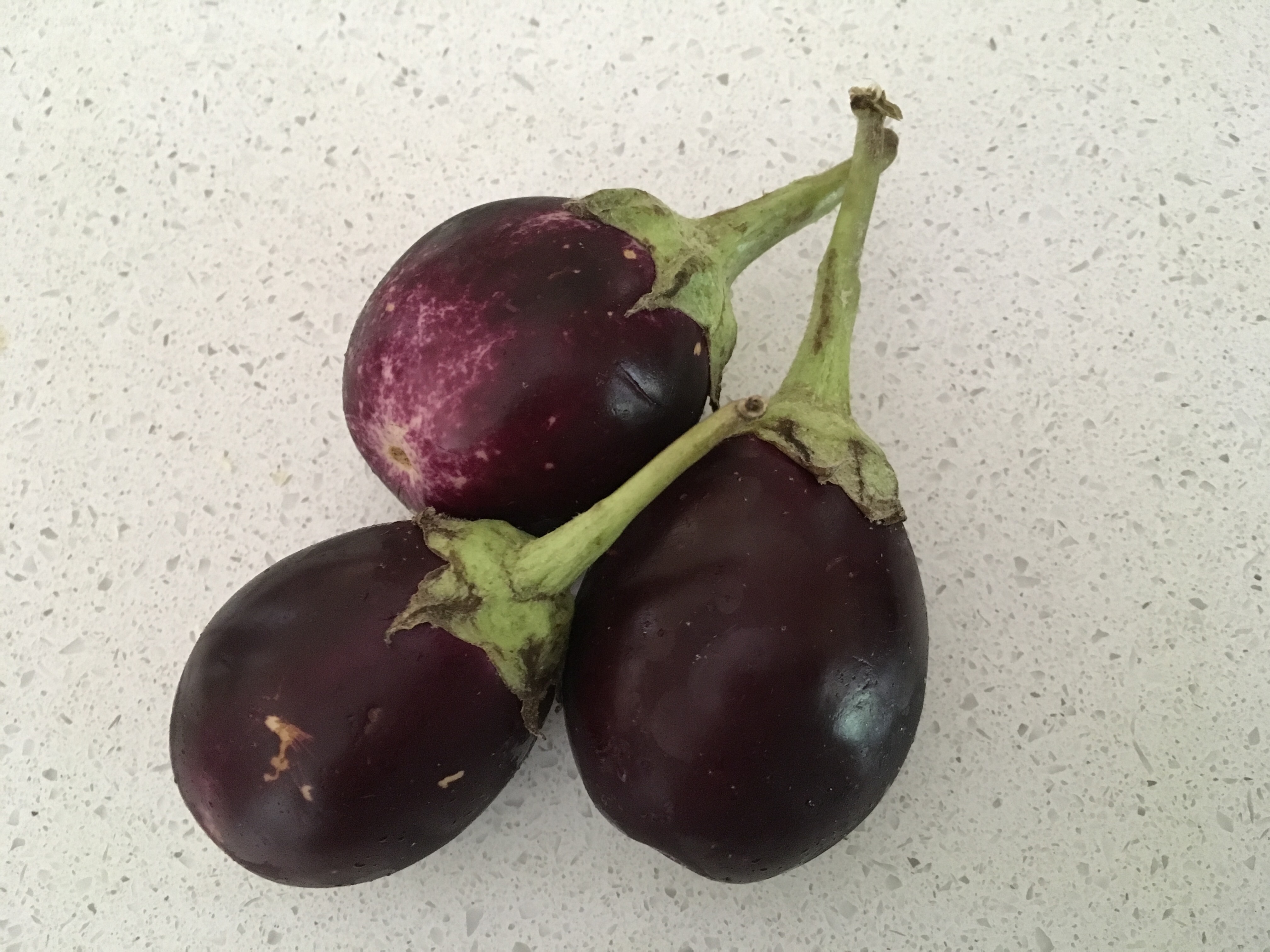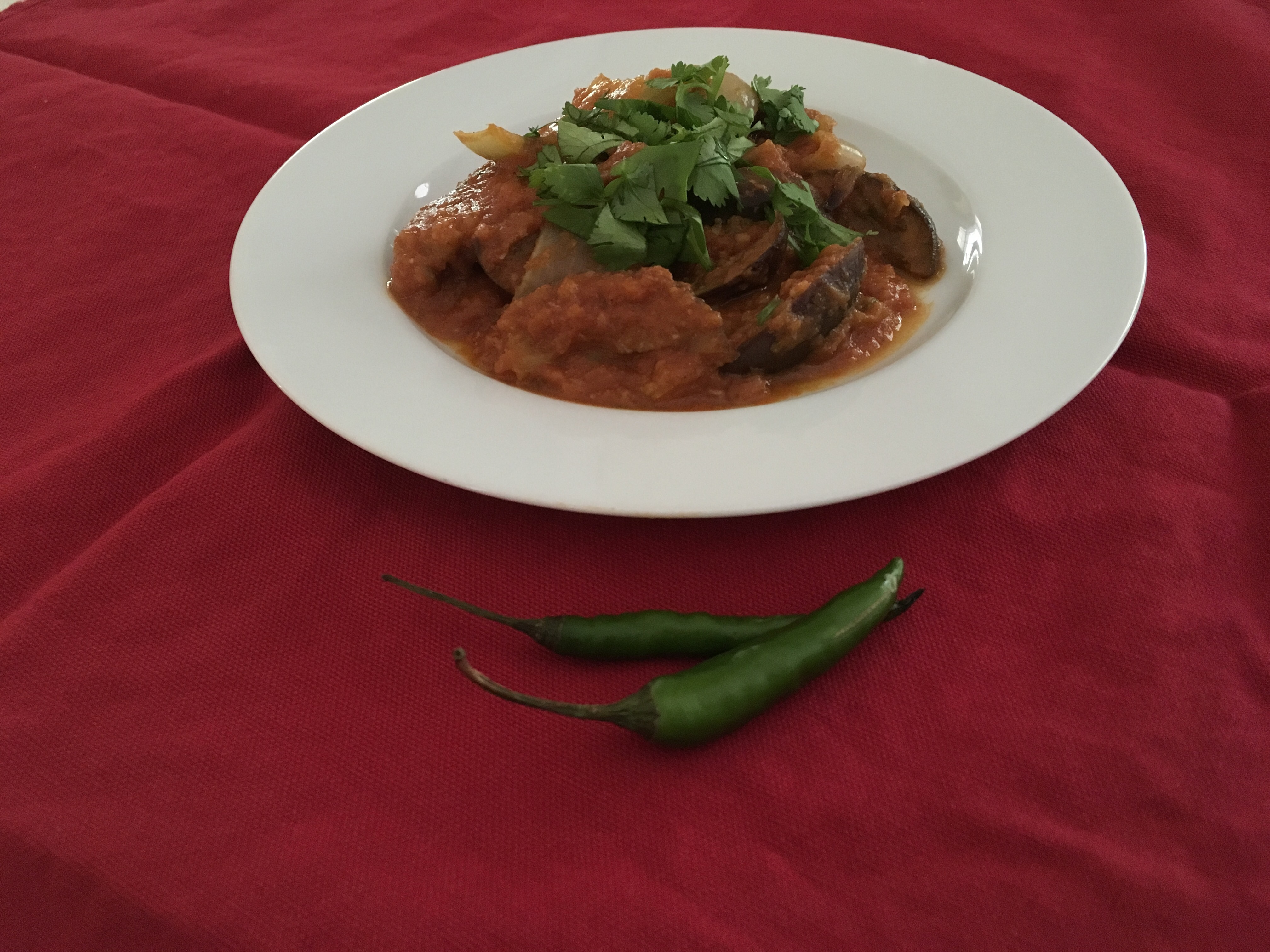‘Tis the season for soup! This recipe for a velvety and zingy soup came about somewhat serendipitously. I usually use carrots for crudités and to add flavor other dishes, but rarely make them the star. However, after inadvertently ordering 10 pounds of organic carrots online, I realized that carrots were going to need celebrity status for a while! Roasting the carrots mellows the flavor, and using a bit of low-fat coconut milk and spice lends just a hint of Southeast Asian flair.
The recipe makes 8 generous servings so you can either make it for a crowd or else freeze half the soup for a cold winter’s night.

Ingredients:
- 2 pounds carrots, peeled and cut into thick 2″ segments
- 4 tablespoons olive oil
- 3 teaspoons salt
- 1 large onion, diced
- 1 pat (teaspoon) butter
- 4 cups vegetable broth
- 3 cups water
- 1/2 teaspoon ground cayenne pepper
- 1 15-ounce can of reduced-fat or light coconut milk
- 1 tablespoon tamarind paste
- 1 teaspoon ground turmeric powder (optional)
Directions:
- Preheat oven to 425°F.
- Toss carrots with 2 tablespoons of olive oil and 1 teaspoon of salt.
- Roast carrots in oven for approximately 20-25 minutes or until tender and starting to brown.
- In a large soup pot, melt butter with two tablespoons of olive oil over medium high heat.
- Sauté diced onions in the butter/olive oil until translucent.
- Add roasted carrots to the onions and toss together in the pot.
- Add 4 cups of vegetable broth and 3 cups of water.
- Bring mixture to a boil, and then simmer on low heat for 20 minutes.
- Remove soup from heat. With an immerseable blender, purée the soup. If you do not have an immerseable blender, cool for 10 minutes and then purée in a blender (using extreme caution by placing only small portions of the soup into the blender so hot soup does not splatter!).
- Add to the soup the remaining salt along with cayenne pepper, coconut milk, tamarind paste, and turmeric. Also, add water as needed if you prefer a thinner consistency. Stir well and bring to a simmer. Simmer for five minutes and then remove from heat.
- Serve hot with a dollop of sour cream or Greek yogurt and a sprinkle of cilantro (of course)!





